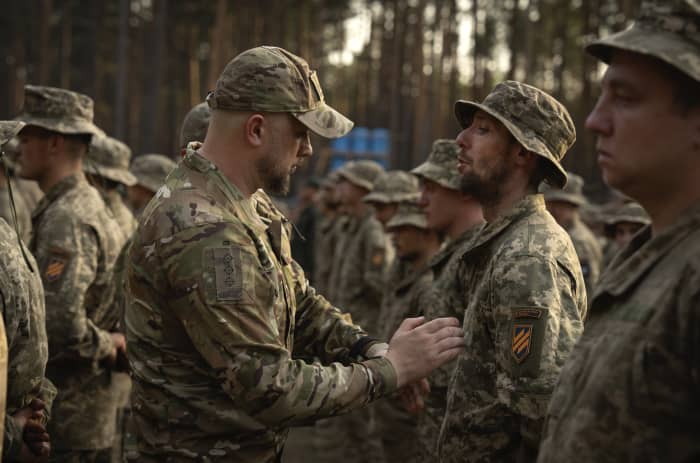The Ukrainian military’s conscription age was dropped from 27 to 25 on Wednesday in an attempt to bolster its already thin numbers following over two years of fighting in the wake of Russia’s full-scale invasion.
A day after being signed by Ukraine’s President Volodymyr Zelenskyy, the new mobilization law became operative. It was approved by the Verkhovna Rada, the parliament of Ukraine, last year.
The reason Zelenskyy took so long to sign the bill into law was not immediately apparent. He refrained from commenting on it in public, and the number and kind of new soldiers the nation anticipated gaining were not disclosed by the officials.
Conscription has been a contentious issue in Ukraine for many months, with a rising infantry shortage compounded by a severe ammunition scarcity, which has given Russia the combat advantage.
Military researchers estimate that the average age of Ukrainian soldiers is around 40, similar to that of Russian soldiers.
Some Ukrainians are concerned that removing young adults from the labor market will exacerbate the war-ravaged economy, but the problem appears to have worsened as Kyiv prepares for the Kremlin’s predicted summer attack.
The initial enthusiasm for going out to fight against the Kremlin’s forces has waned, though public support for the war remains high.
Ukraine currently forbids men younger than 60 from traveling abroad.
Many Ukrainian men are evading the draft by hiding at home or trying to bribe their way out of the battle. Commanders say they don’t have enough soldiers to launch offensives, and barely enough to hold positions during intensifying Russian assaults.
Russia’s population is more than three times as large as Ukraine’s, and President Vladimir Putin has shown a willingness to force men to the front if not enough volunteer.
Zelenskyy has rarely mentioned the mobilization issue, and parliament attached more than 1,000 amendments to the mobilization bill he signed.
The need for a broad mobilization to beef up the number of Ukrainian troops reportedly was one of the areas of disagreement between Zelenskyy and Gen. Valerii Zaluzhnyi, the popular commander in chief of Ukraine’s armed forces whom the president replaced in February.
Ukrainian Defense Ministry statistics say the Ukrainian military had nearly 800,000 troops in October. That doesn’t include National Guard or other units. In total, 1 million Ukrainians are in uniform.
Meanwhile, Ukraine’s air force said it shot down four drones that Russia launched overnight over central provinces.
Zelenskyy said Wednesday that Kharkiv, Ukraine’s second-largest city, “sees daily humiliation and pain” from unrelenting Russian aerial attacks.
Russian attacks all across the country are “wreaking havoc,” Zelenskyy wrote on X, formerly Twitter, in an appeal for Ukraine’s Western partners to supply more air defense systems.
In March alone, the Kremlin’s forces launched more than 400 missiles of various types, 600 Iranian-designed Shahed drones, and more than 3,000 guided aerial bombs against Ukraine, he said.






